Diplomatic Bluebook 2015
Chapter 2
Japan’s Foreign Policy that Takes a Panoramic Perspective of the World Map
1.Strengthening Relations and Cooperating with Latin America and the Caribbean Countries
(1) Strengthening Economic Relations
Latin America and the Caribbean region includes Brazil which has one of the world’s largest economy (7th in the world and a G20 member), Mexico (15th in the world and a G20 member), rapidly growing countries on the Pacific coast such as Colombia, Peru, Chile and Panama, and other countries with rich food and mineral resources such as Argentina (a G20 member) and Bolivia. The economic potential of the region is drawing world-wide attention.
The growth of the region’s economy has been slowing down since 2011 due to the falling commodity prices and the economic slowdown of major countries outside the region, the amount of trade between Japan and the region has doubled in the last 10 years, and the number of Japanese enterprises conducting business in the region was 1,962 as of 2014.
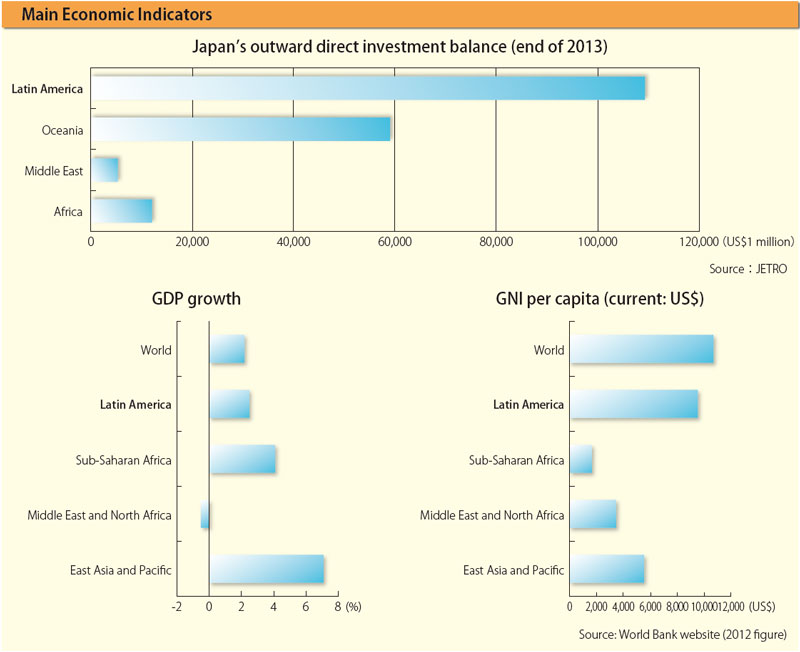
Japan values the region as economic partners to grow together, and the government of Japan and Japanese private sectors work in a unified fashion to promote and facilitate trade and investment relations between Japan and the region. The government of Japan is making efforts to strengthen economic relations with them, including promotion of Japanese companies’ expansion into the region, through the promotion to establishment of EPAs, investment agreements and other legal frameworks contributing to the trade acceleration and the improvement of the business environment for companies operation in the region as well as consultations based on those frameworks. Total of six Japan-Colombia EPA negotiation sessions were conducted in 2014 and the Japan-Uruguay Investment Agreement was signed in January 2015.
(2) Strengthening People-to-people Exchange
Their Imperial Highnesses Prince and Princess Akishino visited Peru and Argentina from January to February, and then Guatemala and Mexico from September to October. Her Imperial Highness Princess Takamado visited to Brazil and Colombia in June.
The region where 1.78 million Japanese descendants live has close human and historical ties with Japan. Against this background, the government of Japan is strengthening people-to-people exchange with the region. In addition to the visit above mentioned by Prime Minister Abe to the region, the government has strengthened exchange at all levels with the region through invitation of young diplomats and Japanese descendants from the region and various exchange programs with Mexico, Cuba, CARICOM and Bolivia, for which 2014 represented a major milestone.
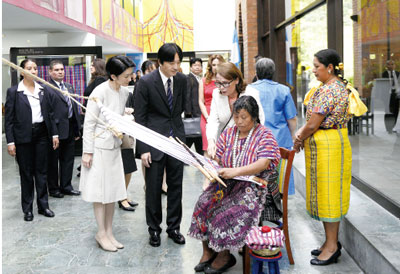 Their Imperial Highnesses Prince and Princess Akishino visiting the Ixchel Museum of Indigenous Textiles and Clothing in Guatemala City (Guatemala City, October 1; Source: AFP-Jiji Press)
Their Imperial Highnesses Prince and Princess Akishino visiting the Ixchel Museum of Indigenous Textiles and Clothing in Guatemala City (Guatemala City, October 1; Source: AFP-Jiji Press)
(3) Contributing to Stable Development of Latin America and the Caribbean Countries
With the recognition that continued growth and political stability are the challenges for stable development of the region, Japan places emphasis on each country achieving stable economic growth through appropriate efforts to reduce poverty and social disparities while at the same time firmly maintaining democracy. For this purpose, Japan has been providing strong support through ODA and other schemes. In renewable energy development, industry infrastructure improvement and other fields that contribute to improvement of living standards including education and health care as well as continued economic growth of each countries in the region. Furthermore, Japan is promoting so-called triangular cooperation with countries including Argentina, Chile, Brazil and Mexico to support other developing countries.
Japan has also conducted cooperation for disaster prevention with the region, which is vulnerable to natural disasters including hurricanes and earthquakes. Because the region is rich in biodiversity and have deep concern over the increase of natural disasters due to the climate change, Japan has also actively cooperated in the environmental field. In response to the severest drought in the past 10 years occurred in September in Honduras, 500,000 US dollars from ordinary contribution to the World Food Programme (WFP) was used for aid.
(4) Cooperation with Latin America and the Caribbean Countries through regional organizations
Various efforts for regional integration have been gradually progressing in the region. In order to strengthen collaboration to address issues in the region and international society, Japan has been strengthening cooperation with the Pacific Alliance, the Forum for East Asia-Latin America Cooperation (FEALAC), the Central American Integration System (SICA), Caribbean Community (CARICOM), the Union of South American Nations/Unión de Naciones Seramericanas (UNASUR), the Common Market of the South/Mercado Común del Sur (MERCOSUR), Community of Latin American and Caribbean States (CELAC) and Ibero-American Summit. With CARICOM, in particular, Japan held the first summit meeting in July and the 17th Japan-CARICOM consultation in October, marking 2014 as the Japan-CARICOM Friendship Year. The 4th Ministerial-Level Conference held in November confirmed future strengthening of relations based on Japan’s CARICOM policies that had been announced by Prime Minister Abe at the summit meeting ((1) Cooperation toward sustainable development including overcoming vulnerabilities particular to small island states, (2) Deeping and expanding bonds founded on exchanges and friendship and; (3) Cooperation in addressing challenges of the international community). Japan will continue to strengthen the cooperation with these regional organizations.
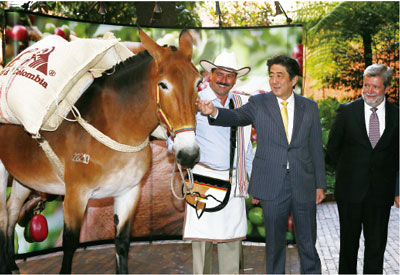 Prime Minister Abe visiting Colombia (Bogota, Colombia, July 28 to 30; Source: Cabinet Public Relations Office)
Prime Minister Abe visiting Colombia (Bogota, Colombia, July 28 to 30; Source: Cabinet Public Relations Office)
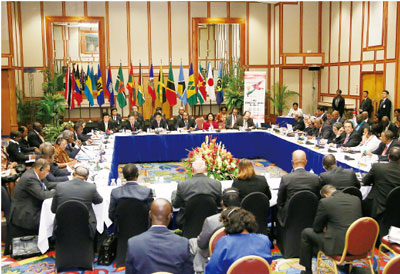 Japan-CARICOM Summit Meeting (Trinidad and Tobago, July 28; Source: Cabinet Public Relations Office)
Japan-CARICOM Summit Meeting (Trinidad and Tobago, July 28; Source: Cabinet Public Relations Office)
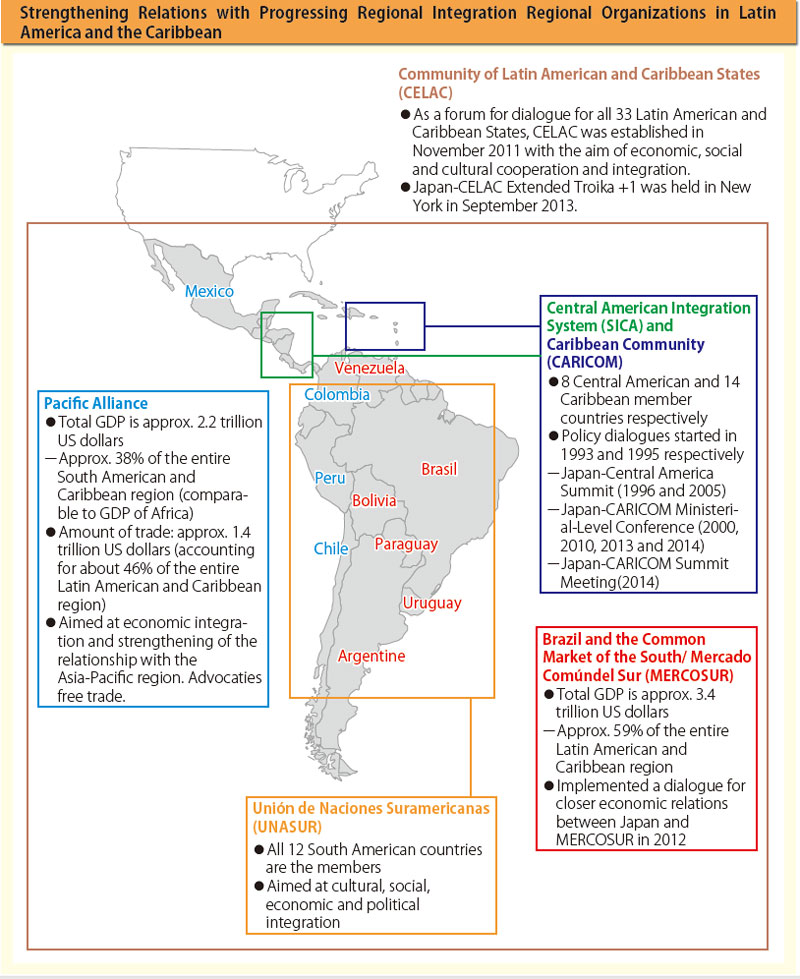
―Attractiveness and Challenges of CARICOM―

The countries of the Caribbean Community (CARICOM), with the exception of Haiti which has a population of 10 million, have a small population, the total of which is around 7 million. Most of them are small island states. However, 12 out of 14 are English-speaking, democratic countries, who with their eloquence are highly active in the international community. Since January 2014, I have visited 12 CARICOM countries as the Ambassador special envoy for Japan-CARICOM Friendship Year, conveying Prime Minister Abe’s messages to CARICOM leaders and exchanging views with them.
Japan and CARICOM
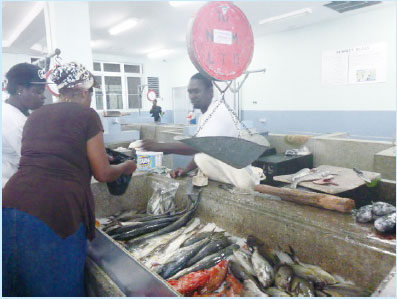 Fishery Complex in Saint Vincent
Fishery Complex in Saint Vincent
In spite of the geographical distance taking over 20 hour-flight from Japan, Japanese people may somehow feel at home in Caribbean region.
The first that we notice is the miniature gardens common in Japan and the sheer number of Japanese cars. Japanese cars are popular in the Caribbean because they have steering wheels on the right side and also because they are reliable.
In addition, we can enjoy fresh and good seafood in the Caribbean. The Fishery Complexes built with Japanese grant assistance have greatly contributed to the local economy, keeping ocean-fresh fish frozen and selling them, while developing human resources.
Severe environment surrounding CARICOM
Countless movies have been filmed on location in CARICOM countries, and in fact, the crystal blue sky, cobalt blue sea and white sand beaches are indeed even more beautiful in real life than in the movies. However, the reality is that the geographical and economic size of the countries poses many difficulties as an independent state.
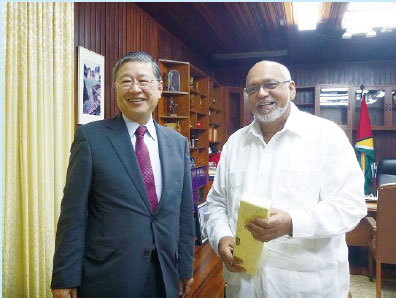 Meeting with President Ramotar of Guyana (at the time) (right)
Meeting with President Ramotar of Guyana (at the time) (right)
A foreign minister of CARICOM member states said “For us, a natural disaster is a national disaster.” In fact, a single hurricane could cause great damage equivalent to two years of GDP, or even a short-term heavy rain could cause great damage which, in Japan would amount to 70 to 80 trillion yen. Furthermore, due to limited farming land, they have no choice but to depend on food import. In addition, because most of its energy is provided by thermal power generation, fuel imports become a burden on their balance of payments and it deteriorates their fiscal conditions. In most of CARICOM member states, electricity is costly. For example, in Barbados, electricity bills for a typical family of four can reach up to 20,000 yen per month. Many CARICOM member states heavily depend on their tourism revenue, and their economic recovery after a big blow from the financial crisis of 2008 is still weak.
In order to address challenges such as natural conditions and the impact of international economic crisis, assistance from the international community is vital. Japan has a major role to play especially in the areas such as disaster risk reduction, renewable energy and energy efficiency, and food production, as a country with experience and technology in these fields.
Ken Shimanouchi,
Ambassador special envoy for Japan-CARICOM Friendship Year

